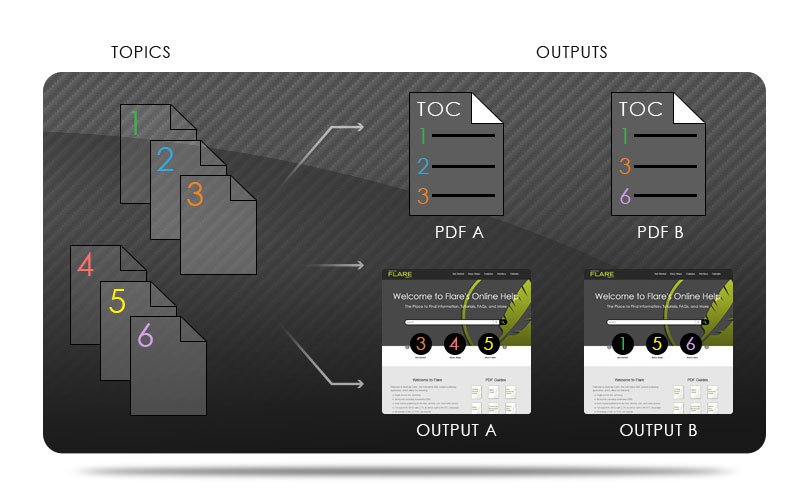Structured Writing Part 4: Creating Content for Reuse Using DITA
In my previous blog post on structured writing, I talked about the tools that are required for authoring content in XML. In the next few blog posts, I’ll drill down into more detail about what structured writing looks like from a writer’s perspective using the DITA standard. Let’s start by looking at how to approach writing for content reuse and how the DITA architecture fits in.
Creating Content for Reuse

Authoring in XML is a way to create content in a structured, standalone, format-free way so that you can reuse the content in more than one place. XML is a markup language likeHTML. Instead of thinking about writing a chapter about a topic, you break that topic down into meaningful chunks of content based on where that content is used in other places and what type of content it is, such as a product introductory paragraph or a reference table. You can even take it to a more granular level, such as a specific instruction or a product name. You also need to think about if that content already exists, if it exists but needs to be modified or if needs to be created. You want to break your content down into as many reusable parts as it makes sense to and write the content in a general way, adding specifics using your writing standard (see the DITA section below) and XML authoring program. Then you add all the XML files together that you need to create your topic and publish them. Instead of having one file for your document, you may have many smaller files.
The graphic on the right depicts the concept of reuse. You have six standalone topics. You then take topics 1, 2 and 3 to compile a PDF and a web output. You pull the same topics 1 and 3 and then add 6 to create a different PDF and web output. You write one time, in as small of a way that makes sense, and reuse the content across multiple outputs. It’s a very efficient and cost-effective way to write.
Thinking about Structure from the Beginning

Authoring in XML using DITA does require a change in how you think about content. You need to spend more time upfront thinking about structure, where content exists and if the content can be reused. And sometimes it requires you to change the structure once you actually get into the content. It isn’t like starting with a blank document like Microsoft Word where you can just start typing. However, you eventually apply structure to all the types of content in Word too – it’s just a different working order with XML. Also, if the styles match, the output of Word and published XML content should look the same.
Using DITA as a Writing Architecture
DITA (Darwin Information Typing Architecture) is an open architecture that you can apply to structure your content. DITA is the most common standard to use in the technical writing field. The DITA standard defines all kinds of information types, the most common being the topics of task, concept and reference. A lot of technical information can fit within these three information types, but there are a lot of other types of elements and you can also create specializations to fit your content.
The latest DITA standard is 1.3 and it includes enhancements and additional support for different elements. DITA is managed by the OASIS DITA Technical Committee and the DITA XML.org online community is a good place to learn more. XML authoring programs have the DITA structure built into them along with validation tools so you can always start by experimenting with some of the basic elements.
Conclusion
Creating content in XML using DITA is a way to enable you to write once and reuse the content in multiple outputs, which can save writing time and reduce translation costs. In the next blog post in this series, I’ll talk about creating content using DITA elements.
